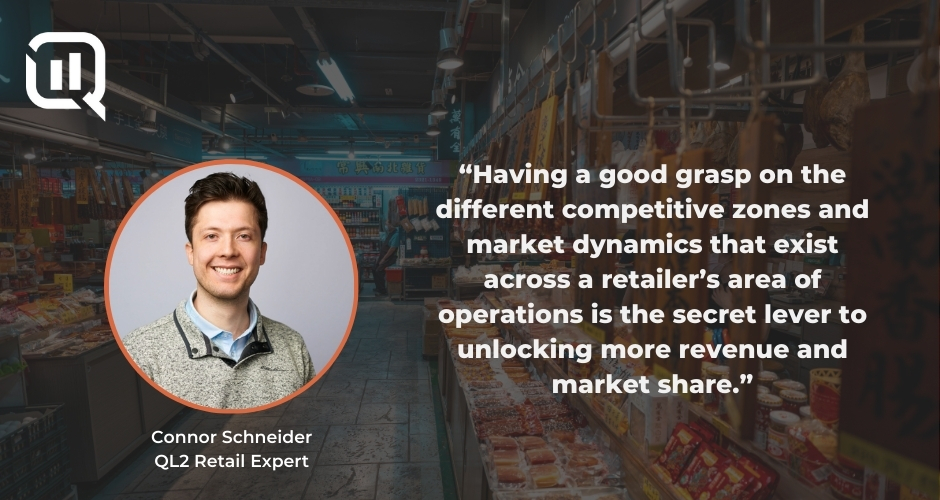Forget one-size fits-all! Regional pricing is the new must-have for retailers. For national retail brands that have operations in even just a few states, maintaining only a national pricing strategy is gradually becoming a losing strategy. In today’s pricing world, there is good cause to have unique pricing strategies at least at the regional level. There’s a growing case to go even further: adjusting pricing based on what area of town a store is in, and how many competitors are nearby.
Many of the brands and retailers I talk to are now considering hyper local elements when forming pricing strategies. Consideration to the cost of local operations has always been a factor, which is why once, on an anniversary trip to Hawaii, I found myself paying nearly $7 for a loaf of bread. But a deliberate review of what competitive zone any given store might be in is the hot new practice.
Retailers are pricing their SKUs differently in Minneapolis, Minnesota (where consumers have plenty of options to choose from) than they are in Baldwin, Wisconsin (where the closest competitor store is 30 miles away).
Having a good grasp on the different competitive zones and market dynamics that exist across a retailer’s area of operations is the secret lever to unlocking more revenue and market share.
So, regional pricing is becoming table stakes – but it is not a simple practice to acquire the competitive information necessary to inform that regional strategy. Sure, a retailer could send people to walk their competitor’s brick & mortar stores and record the prices that they see. But that tactic became inefficient when the first ecommerce site was launched, and is downright outdated at this point. At scale, the only way to do this is by using a data provider to crawl competitor sites for unique price points. But that is not a simple project for any one of the numerous data providers in the market.
Here’s an example of the compounding difficulty associated with collecting regional pricing variability.
An average use case for a retailer looking to acquire competitive intelligence might look something like this:
20,000 SKUs to be monitored on 10 competitor websites. Assuming average match coverage to be around 80%, there would likely be at least 160,000 price points available for review.
Now, consider that this retailer is Target, who might have slightly different prices listed in two zip codes that are in the same state, and substantially different prices in two zip codes on opposite sides of the country. Conservatively, assume they need to monitor 500 zip codes throughout the nation. Then, the data collection formula looks more like this:
20,000 SKUs monitored on 10 competitor websites. Each website should have match prices collected on each of the 500 zip codes. Now those data files contain 80 million price points, as each match is associated with its own zip-based price.
Most match prices hold steady across zip codes, but variations exist that need understanding. Crawling websites is a game of getting as much information as you can, as fast as possible, while not making yourself obvious to the website being crawled. While the data is publicly available, most sites employ blocking mechanisms that make sure you don’t linger. When crawling across many unique zip codes, one can see how the data collection piece compounds. To the point where most competitive intelligence providers simply can’t call that many data points from a website in an efficient manner. If a data provider can’t navigate the traps and pitfalls present when collecting regional data, they aren’t maximizing the value that their retail customers need to make informed decisions.
QL2 specializes in gingerly and ethically securing competitive data, such that when we are collecting crucial regional price information across tens of thousands of SKUs we don’t activate the traps waiting for the unwary. While some competitors stumble on the limitations imposed by the increasingly sophisticated blocking on websites, QL2 employs advanced techniques to ensure timely, accurate and complete data sets, all the while being respectful during collection.
Leveraging regional pricing strategies is a temporary competitive edge that will eventually become the standard. But gathering the data needed to make informed decisions can be a complex and data-heavy endeavor.
That’s where QL2 comes in. We specialize in navigating the complexities of regional data collection, delivering comprehensive datasets retailers can trust. With QL2 as a partner, you can unlock the power of regional pricing and develop cutting-edge strategies that drive revenue, boost customer satisfaction, and solidify your position as a market leader.
Ready to unlock the full potential of regional pricing? Contact QL2 today for a free consultation and see how we can empower your success.

Helping product/merchandising teams identify pricing gaps to maximize sales and profitability.



